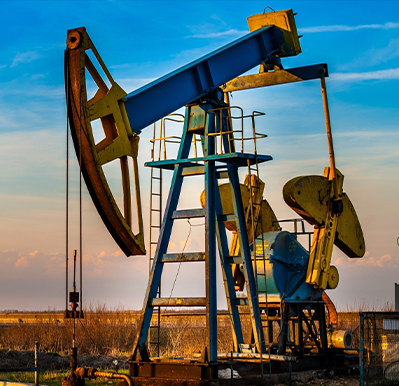- Afrikaans
- Albanian
- Amharic
- Arabic
- Armenian
- Azerbaijani
- Basque
- Belarusian
- Bengali
- Bosnian
- Bulgarian
- Catalan
- Cebuano
- Corsican
- Croatian
- Czech
- Danish
- Dutch
- English
- Esperanto
- Estonian
- Finnish
- French
- Frisian
- Galician
- Georgian
- German
- Greek
- Gujarati
- Haitian Creole
- hausa
- hawaiian
- Hebrew
- Hindi
- Miao
- Hungarian
- Icelandic
- igbo
- Indonesian
- irish
- Italian
- Japanese
- Javanese
- Kannada
- kazakh
- Khmer
- Rwandese
- Korean
- Kurdish
- Kyrgyz
- Lao
- Latin
- Latvian
- Lithuanian
- Luxembourgish
- Macedonian
- Malgashi
- Malay
- Malayalam
- Maltese
- Maori
- Marathi
- Mongolian
- Myanmar
- Nepali
- Norwegian
- Norwegian
- Occitan
- Pashto
- Persian
- Polish
- Portuguese
- Punjabi
- Romanian
- Russian
- Samoan
- Scottish Gaelic
- Serbian
- Sesotho
- Shona
- Sindhi
- Sinhala
- Slovak
- Slovenian
- Somali
- Spanish
- Sundanese
- Swahili
- Swedish
- Tagalog
- Tajik
- Tamil
- Tatar
- Telugu
- Thai
- Turkish
- Turkmen
- Ukrainian
- Urdu
- Uighur
- Uzbek
- Vietnamese
- Welsh
- Bantu
- Yiddish
- Yoruba
- Zulu
Durable Coupling Solutions for Stainless Steel Fittings in Various Industrial Applications
Coupling Stainless Steel Fittings A Comprehensive Overview
In the realm of plumbing and piping, stainless steel fittings play a pivotal role in ensuring the seamless flow of fluids, gases, and various media. One of the key components in this category is the coupling, which serves as a crucial link between two pipes or tubes. This article delves into the significance, types, advantages, and applications of coupling stainless steel fittings.
Understanding Couplings
A coupling is a mechanical device that joins two pipe ends, providing continuity in the flow of fluids. It is designed to connect like materials, allowing for a smooth transition in diameter or direction. Couplings are particularly essential when extending a piping system or rerouting lines, making them invaluable in multiple industries, including construction, manufacturing, and chemical processing.
Types of Coupling Stainless Steel Fittings
Coupling fittings come in various designs to accommodate different requirements
1. Straight Couplings These are the most common type, used to connect two pipes of the same diameter in a straight line. They are simple yet effective for extending pipelines.
2. Reducing Couplings Used to join pipes of different diameters, reducing couplings enable the transition from a larger diameter pipe to a smaller one, optimizing fluid flow while maintaining pressure.
3. Soldering Couplings Designed for use with soldering applications, these couplings are perfect for joining copper pipes, providing a tight, leak-proof seal.
4. Threaded Couplings Featuring male or female threads, these couplings allow for easy connection and disconnection of pipes, ideal for applications requiring frequent maintenance.
5. Compression Couplings These fittings are used to connect two pipes using a compression mechanism, providing a strong hold while allowing for thermal expansion.
Advantages of Stainless Steel Couplings
Stainless steel is a preferred material for couplings due to its numerous advantages.
coupling stainless steel fitting

- Corrosion Resistance Stainless steel has excellent resistance to corrosion, making it ideal for use in environments where moisture and chemicals are present
. This quality ensures a longer lifespan and reduced maintenance costs.- Durability The strength of stainless steel fittings enables them to withstand high pressures and temperatures, making them suitable for demanding applications.
- Hygiene Stainless steel is easy to clean and maintain, making it an optimal choice for industries such as food and beverage, pharmaceuticals, and biotechnology where hygiene is paramount.
- Versatility Coupling stainless steel fittings come in various sizes and specifications, allowing them to be used in a wide range of applications, from residential plumbing to industrial processes.
Applications of Coupling Stainless Steel Fittings
The versatility of coupling stainless steel fittings means they are utilized in many fields
- Construction and Infrastructure In building facilities and infrastructure, these fittings secure piping systems that carry water, gas, and drainage.
- Oil and Gas Industry Stainless steel couplings are crucial in pipelines and systems transporting crude oil, refined products, and natural gas due to their ability to withstand harsh environmental conditions.
- Food and Beverage Industry Used in processing plants, these fittings ensure the safe transportation of liquids while adhering to strict hygiene standards.
- Manufacturing and Chemical Processing Couplings are employed in processes where chemical resistance and durability are essential, ensuring safety and efficiency in operations.
Conclusion
In summary, coupling stainless steel fittings are fundamental components that facilitate efficient pipe connections across a variety of industries. Their notable attributes—corrosion resistance, durability, and versatility—make them an excellent choice for both commercial and industrial applications. As industries continue to evolve and demand high-quality piping solutions, the importance of stainless steel couplings will undoubtedly persist, ensuring that fluid and gas transportation systems remain reliable and efficient for years to come.
-
Tubing Pup Joints: Essential Components for Oil and Gas OperationsNewsJul.10,2025
-
Pup Joints: Essential Components for Reliable Drilling OperationsNewsJul.10,2025
-
Pipe Couplings: Connecting Your World EfficientlyNewsJul.10,2025
-
Mastering Oilfield Operations with Quality Tubing and CasingNewsJul.10,2025
-
High-Quality Casing Couplings for Every NeedNewsJul.10,2025
-
Boost Your Drilling Efficiency with Premium Crossover Tools & Seating NipplesNewsJul.10,2025







